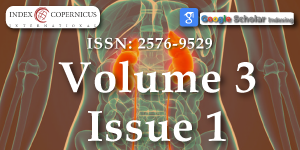Can bloodstream infection be predicted by nasal culture in hemodialysis patients?
Main Article Content
Abstract
The blood and drainage cultures are suggested for early diagnosis of bloodstream infection (BSI), which are time consuming and laborious. Nasal colonization of bacteria is one of the modalities, occasionally can predict BSI. We hypothesized that nasal culture, as an accessible fluid may be helpful to predict future BSI in hemodialysis patients. The present prospective study evaluated 63 patients undergoing maintenance hemodialysis at the Pars hospital dialysis center, Tehran, Iran, from November 2015 until February 2016. Nasal fluid of patients were collected from the 1–cm internal anterior part of both nostrils of patients by a sterile swab and cultured in Trypticase soy agar. All patients were followed for three months for BSI. The results of first nasal fluid sample revealed that 33.3% in first sampling and 27.0% in sampling had positive nasal fluid culture. The type of bacteria in all positive cases was Staphylococcus aureus. The rate of BSI infection in the patients with positive and negative first nasal fluid culture was 9.5% and 2.4% respectively with no significant difference. We found also no significant association between BSI positivity and nasal culture results so that positive BSI was revealed in 5.9% of patients with positive nasal fluid culture and 4.3% in those with negative nasal fluid culture with no meaningful difference. None of the baseline variables including age and gender, underlying risk factor, access, or duration of dialysis was associated with BSI positivity. In hemodialysis patients, BSI may not be predicted by nasal fluid culture positivity.
Article Details
Copyright (c) 2019 Broumand B, et al.

This work is licensed under a Creative Commons Attribution 4.0 International License.
Abdel-Kader K, Unruh ML, Weisbord SD. Symptom burden, depression, and quality of life in chronic and end-stage kidney disease. Clinical Journal of the American Society of Nephrology. 2009; 4: 1057-1064. Ref.: http://tinyurl.com/y6oxqmhz
Wasse H. Catheter‐Related Mortality among ESRD Patients. Semin Dial. 2008; Wiley Online Library. 21: 547–549. Ref.: http://tinyurl.com/yx9g73we
Dalrymple LS, Mu Y, Romano PS, Nguyen DV, Chertow GM, et al. Outcomes of infection-related hospitalization in Medicare beneficiaries receiving in-center hemodialysis. Am J Kidney Dis. 2015; 65: 754-762. Ref.: http://tinyurl.com/y23l73uf
Leone S, Suter F. Severe bacterial infections in haemodialysis patients. Infez Med. 2010; 18: 79-85. Ref.: http://tinyurl.com/yxfev8nm
Karkar A. Infection control guidelines in hemodialysis facilities. Kidney Res Clin Pract. 2018; 37: 1-3. Ref.: http://tinyurl.com/yxlnrvzp
Patel PR, Brinsley-Rainisch K. The Making Dialysis Safer for Patients Coalition: A New Partnership to Prevent Hemodialysis-Related Infections. Clin J Am Soc Nephrol. 2017; pii: CJN.02730317. Ref.: http://tinyurl.com/yyuxch6f
Nguyen DB, Gutowski J, Ghiselli M, Cheng T, Bel Hamdounia S, et al. A Large Outbreak of Hepatitis C Virus Infections in a Hemodialysis Clinic. Infect Control Hosp Epidemiol. 2016; 37: 125-133. Ref.: http://tinyurl.com/y6fncgoh
Malyszko J, Zawierucha J, Marcinkowski W, Prystacki T, Dryl-Rydzynska T, et al. The prevalence of hepatitis C and B among patients on hemodialysis and on renal transplantation waiting list in Poland has significantly decreased during the last 10 years. Int Urol Nephrol. 2018; 50: 1555-1556. Ref.: http://tinyurl.com/y2wjxtla
Dalrymple LS, Mu Y, Nguyen DV, Romano PS, Chertow GM, et al. Risk Factors for Infection-Related Hospitalization in In-Center Hemodialysis. Clinical journal of the American Society of Nephrology: CJASN. 2015; 10: 2170-2180. Ref.: http://tinyurl.com/y2d5stoc
Fram D, Taminato M, Ponzio V, Manfredi SR, Grothe C, et al. Risk factors for morbidity and mortality of bloodstream infection in patients undergoing hemodialysis: a nested case–control study. BMC research notes. 2014; 7: 882. Ref.: http://tinyurl.com/y3pukkrk
Schmid H, Romanos A, Schiffl H, Lederer SR. Persistent nasal methicillin-resistant staphylococcus aureus carriage in hemodialysis outpatients: a predictor of worse outcome. BMC nephrology. 2013; 14: 93. Ref.: http://tinyurl.com/y45rj74f
Verhoeven PO, Gagnaire J, Haddar CH, Grattard F, Thibaudin D, et al. Identifying Hemodialysis Patients With the Highest Risk of Staphylococcus aureus Endogenous Infection Through a Simple Nasal Sampling Algorithm. Medicine. 2016; 95: e3231. Ref.: http://tinyurl.com/y2w3awhh
Grothe C, Taminato M, Belasco A, Sesso R, Barbosa D. Screening and treatment for Staphylococcus aureus in patients undergoing hemodialysis: a systematic review and meta-analysis. BMC nephrology. 2014; 15: 202. Ref.: http://tinyurl.com/y2wqakda
Alcelik A, Apuhan T, Kocoglu E, Eroglu M, Necati Hakyemez I, et al. Microbial colonization of the external auditory canal and nose in hemodialysis patients. Medicinski glasnik: official publication of the Medical Association of Zenica-Doboj Canton, Bosnia and Herzegovina. 2012; 9: 330-333. Ref.: http://tinyurl.com/yy86p4fm
Pujol M, Peña C, Pallares R, Ariza J, Ayats J, et al. Nosocomial Staphylococcus aureus bacteremia among nasal carriers of methicillin-resistant and methicillin-susceptible strains. Am J Med. 1996; 100: 509-516. Ref.: http://tinyurl.com/yyqtuggr
Chow JW, Yu VL. Staphylococcus aureus nasal carriage in hemodialysis patients. Its rolein infection and approaches to prophylaxis. Arch Intern Med. 1989; 149: 1258-1262. Ref.: http://tinyurl.com/y6nq7crc
Dalrymple LS, Johansen KL, Chertow GM, Cheng SC, Grimes B, et al. Infection-Related Hospitalizations in Older Patients With End-Stage Renal Disease. Am J Kidney Dis. 2010; 56: 522-530. Ref.: http://tinyurl.com/y4mb9b5j
Fysaraki M, Samonis G, Valachis A, Daphnis E, Karageorgopoulos DE, et al. Incidence, clinical, microbiological features and outcome of bloodstream infections in patients undergoing hemodialysis. Int J Med Sci. 2013; 10: 1632-1638. Ref.: http://tinyurl.com/yywrqrgg
Askarian M, Hajiabadi MJ, Kashkooli YA, Yousofi M, Fathi H, et al. Improving infection prevention methods in hemodialysis units: A multicenter survey. Am J Infect Control. 2014; 42: 193-194. Ref.: http://tinyurl.com/y29t5bm3
Maki DG, Kluger DM, Crnich CJ. The risk of bloodstream infection in adults with different intravascular devices: a systematic review of 200 published prospective studies. Mayo Clin Proc. 2006; 81: 1159-1171. Ref.: http://tinyurl.com/y53d8j9o
Gahlot R, Nigam C, Kumar V, Yadav G, Anupurba S. Catheter-related bloodstream infections. Int J Crit Illn Inj Sci. 2014; 4: 162-167. Ref.: http://tinyurl.com/y28k5ct5
Wertheim HF, Melles DC, Vos MC, van Leeuwen W, van Belkum A, et al. The role of nasal carriage in Staphylococcus aureus infections. Lancet Infect Dis. 2005; 5: 751-762. Ref.: http://tinyurl.com/y33ergtl
Gebreselassie HM, Lo Priore E, Marschall J. Effectiveness of meticillin-resistant Staphylococcus aureus decolonization in long-term haemodialysis patients: a systematic review and meta-analysis. J Hosp Infect. 2015; 91: 250-256. Ref.: http://tinyurl.com/y5lsbnyo





